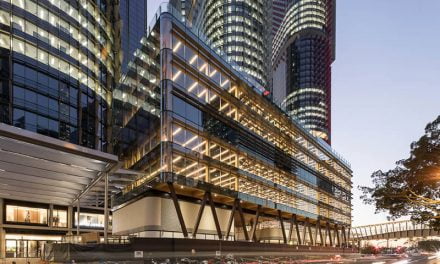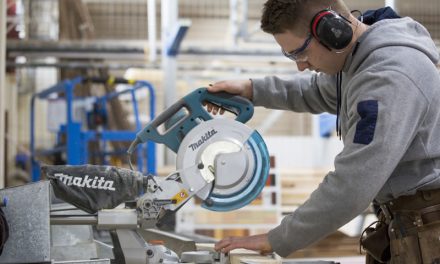In a construction market where budgets are forever under pressure, the use of timber materials in combination with offsite construction approaches can be a genuine silver bullet for astute builders.
Richard Smith, Associate Director of MBMpl says where timber wins compared to conventional concrete and steel approaches for major projects is firstly the speed of construction.
Using a combination of prefabrication and contemporary timber materials such as cross-laminated timber, glulam and laminated veneer lumber can result in around 40 per cent less time on site.
That means revenues coming in earlier from either rents or residential sales.
As research carried out on behalf of Forest and Wood Products Australia by the Timber Development Association in conjunction with University of Technology Sydney and leading architects and engineers including Arup and AECOM has shown, there is also a vastly reduced cost in terms of project preliminaries across all major building types.
The Commercial Building Costing Cases Studies – Traditional Design versus Timber Project research showed those savings include less time needing site sheds, less time paying for traffic management, fewer trades on site, fewer truck movements and less time paying for the crane on site.
The time saving is key, Smith says. “Speed in this day and age is important – everyone wants things faster.”
Smith says that projects can save between four and six percent on costs as an absolute minimum – and if it’s a $100 million project in Sydney for example, that’s between $4 million and $6 million saved.
“And that’s just the start of the benefits,” he says.
The timber approach also means less waste, and has other sustainability benefits.
While waste is not factored into most construction budget calculations, it does have a cost, Smith says.
Sending waste to landfill costs money, as do the labourers loading the trucks and the trucks themselves.
Where timber and prefabricated approaches are used, it is possible to achieve waste rates as low as one per cent, or even virtually zero.
Smith says that once everything is weighed in, savings of around 10 to 15 percent and upwards are possible.
It is something he says the up-and-coming next generation of construction professionals, who value sustainability and are aware of the value of externalities will take up.
“There is a momentum shift happening,” Smith says. “The more forward-looking and contemporary firms who are already investing in timber methodology are thriving right now. They have a head start.”
Frame 2017, Timber Offsite Construction, will be held on Monday and Tuesday 19-20 June 2017 at Park Hyatt Melbourne. For event details visit the website at www.frameaustralia.com











